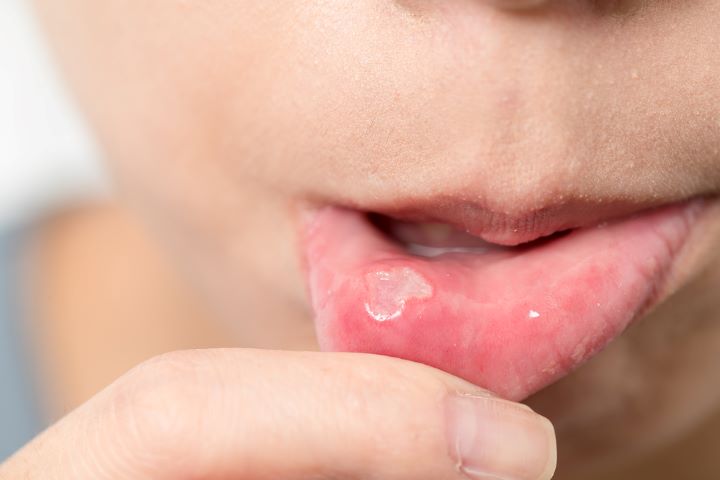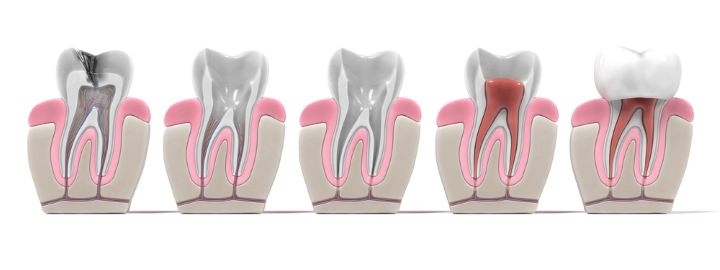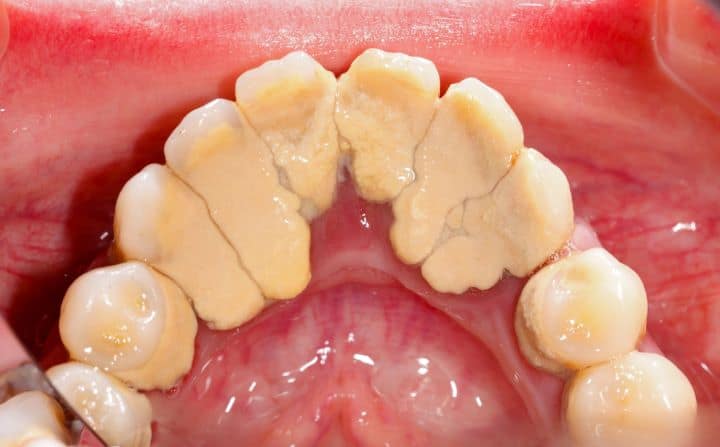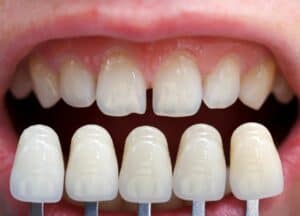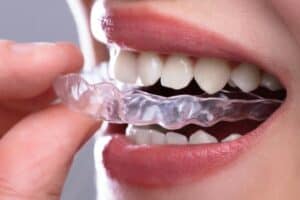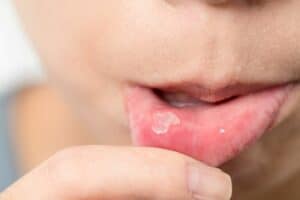Maintaining optimum oral health is essential for overall well-being, a fact that cannot be stressed enough.

Full mouth debridement is one such procedure that helps you achieve optimal oral health. It is a dental procedure that helps remove the accumulated plaque, tartar, and bacterial overload from the entire oral cavity thus, improving oral hygiene as well as gum health.
In this article, we will discuss the purpose, process, benefits, and expected outcomes of this dental procedure. Read on to learn more about full mouth debridement (FMD).
What is Full Mouth Debridement?
Definition and purpose of full mouth debridement
Full mouth debridement is a dental nonsurgical procedure done to remove the oral bacterial load, the soft plaque from the tooth surface also the hardened tartar found at the gum line.
The primary purpose of this procedure is to re-establish the oral equilibrium of hygiene and health to mitigate the risk for future oral disease and to impede any progressive oral disease present. It is primarily used in oral prophylaxis.
When is full mouth debridement necessary?
If you have been skipping your routine dental checkups often, you might need this procedure. Your dentist may recommend this procedure if your gum disease has progressed to a periodontal disease because of the plaque buildup.
Dental Plaque is a sticky, soft film that, over time, hardens into calculus or tartar causing gum inflammation and loss of bone thus leading to periodontal pockets.
Eventually, neglected dental care can lead to tooth loss. Hence, at some point in time, FMD becomes a necessary procedure.
Importance of full mouth debridement for oral health
Full mouth debridement procedure may be done not only for the removal of plaque, tartar, and oral bacteria but also for the prevention of gum diseases, periodontitis, and dental caries or cavities in the long run.
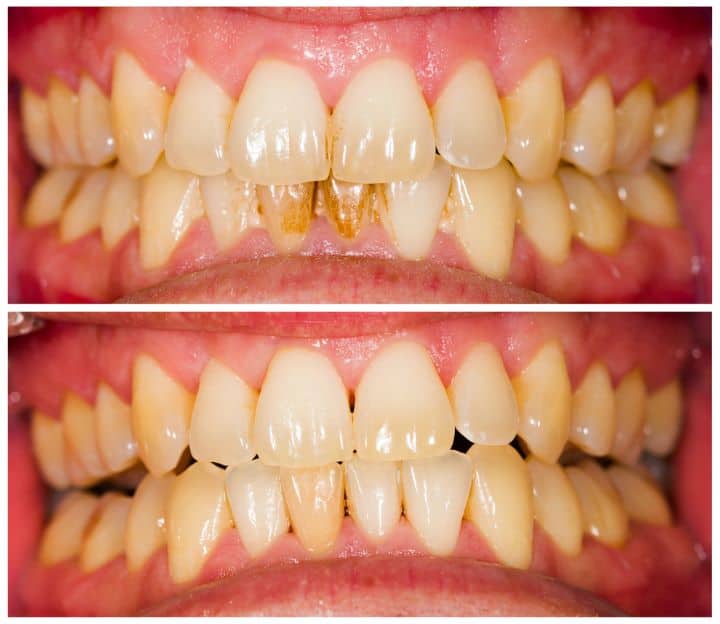
This prophylaxis procedure allows the oral cavity to respond better to further treatments.
The Full Mouth Debridement Process
Preparing for the procedure
Your dentist or dental hygienist will perform a comprehensive oral examination to assess your dental health condition.
It might involve taking x-rays to assess your jaw bone health. The level of plaque and tartar accumulation will be the primary focus of the initial assessment that decides whether or not you need a full mouth debridement.
Steps involved in full mouth debridement
A typical full mouth debridement procedure involves the following steps-
- Anesthesia- a local anesthetic is applied to the gums and the surrounding oral tissues to numb them to prevent any discomfort during the procedure. This will depend on the level of plaque and calculus present on your teeth and gums. Plaque present above the gum line is called supragingival while that present below the gum line, covering the tooth root surface is called subgingival plaque and is hard to reach.
- Scaling and root planing – scaling is a standard teeth cleaning procedure used to remove supragingival plaque, while root planing, also called deep cleaning, is the procedure done to remove the subgingival plaque. A hand instrument or an ultrasonic instrument is used to perform these procedures. The ultrasonic device is used to remove tartar using vibrations. These are the two dental cleanings that remove the plaque and calculus.
- Polishing- after a deep dental cleaning, it is important to smoothen the tooth’s crown and tooth’s root surfaces to prevent bacteria from colonizing them again. Hence polishing is required.
Duration and recovery after full-mouth debridement
A full mouth debridement may take about an hour or so to complete.
However, the primary factor that controls the duration is the extent of plaque accumulation. Moreover, your hygienist might only perform the procedure on one quadrant or one jaw at a time to acclimate you to the procedure.
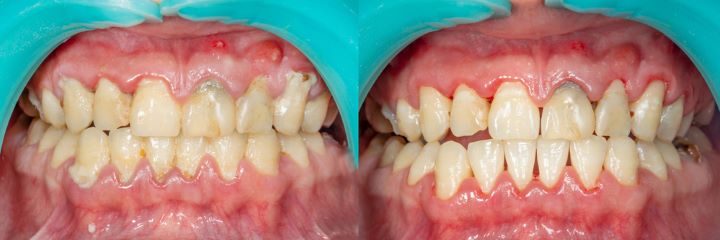
Once the procedure is done, some irritation and sensitivity are commonly experienced by a majority of patients. However, in a few weeks, the gums heal and become firmly attached to the teeth and the patient doesn’t experience any discomfort anymore.
Benefits of Full Mouth Debridement
Improved oral hygiene and gum health
Needless to say, reduced bacteria, plaque, and tartar automatically improve oral health drastically.
Prevention of gum disease and tooth decay
With the elimination of factors causing gum disease and tooth decay, both can be prevented.
Enhanced effectiveness of subsequent dental treatments
A major benefit of full mouth debridement is the enhanced efficacy of subsequent dental treatments. In fact, FMD is the first step in many dental procedures such as gum surgery and tooth extraction. It helps assess the response to subsequent dental treatment.
How is debridement different from other cleanings?
The primary purpose of debridement is to remove hard deposits and pathogens that lead to gum diseases and periodontal pockets. Sometimes antibiotic dressings are placed in the pockets to hasten healing and prevent reinfection.
It may take a few weeks for the gums to reattach to the tooth root and thus for the results to show. FMD or periodontal debridement is a more intensive dental procedure when compared to regular dental cleanings.
Potential Outcomes and Considerations
Common results after full mouth debridement
Immediately after the procedure the gums might bleed and the teeth might be sensitive. However, once the healing is complete, the yellowed teeth with swollen bleeding gums transition into pink healthy gums and bright white teeth.
Post Procedure care and maintenance
Your dental professional will advise you on further steps. Whether you would benefit from a fluoride treatment or is gum surgery required, your dentist or dental hygienist will inform you. Just follow all instructions diligently.
Longterm impact on oral health and hygiene
Your oral health and hygiene is your responsibility and the importance of maintaining it cannot be emphasized enough.
Clean your teeth twice daily, floss, and rinse your mouth with water every time you eat. FMD when combined with practicing good oral hygiene can lead to a more fulfilled life.

